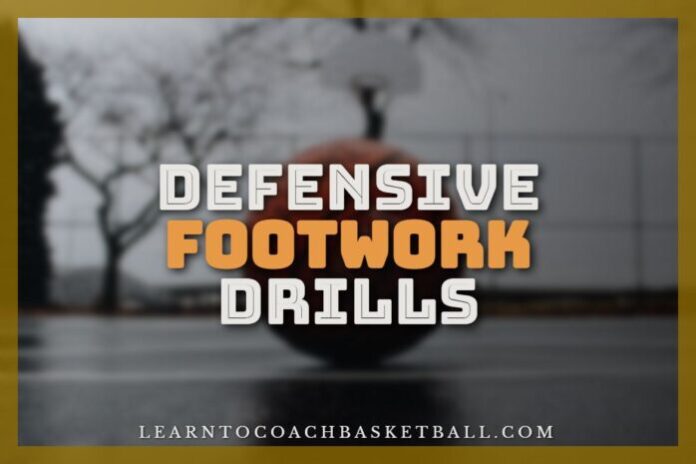
Few things frustrate me more than watching poor teaching techniques perpetuated because coaches fail to examine their methods critically and instead teach the same “basketball truth” over and over regardless of the efficacy of the skill or the teaching.
Static stretching is the biggest culprit, as many coaches refuse to adjust their coaching despite paper after paper that explains that static stretching before an activity like basketball does NOT prevent injuries or serve as a proper warm-up, and instead leads to worse performance in power-related activities like jumping and sprinting.
Second to static stretching, however, is the way that many teach defense. A friend sent this video which claims to teach proper defensive footwork. The drill – the zig-zag drill – is one of the most popular and most used drills in basketball.
Unfortunately, it is basically useless. The technique used – the step-slide and drop-step – is the same technique that I was taught as a player. It is a foundation of fundamental defense. And, no good defensive player actually moves in this way.
I term drills like the zig-zag drill “time wasters” or “fake fundamentals.” To outsiders, they look good; it looks like players are working hard and diligently at an important skill. But, since there is almost no transfer between the practice movement and the game movement, these drills simply waste time.
The first problem with the drill is the angle. If a defender, in a game, is moving at a 45-degree angle, he cannot use a defensive slide. In this instance, the offensive player is moving forward – otherwise, why would the defender move at an angle? – and no player can shuffle fast enough to stay in front of an offensive player who is running.
Therefore, when moving at an angle like this, and actually defending an offensive player, the defender should use a crossover step: rather than a short step with his lead foot, he should take a big step with his trail foot and cross in front of his lead foot to cover as much distance as quickly as possible.
Fundamental teaching says that defenders should never cross their feet. However, these fundamental teachers must never have had to defend a quick guard like Chris Paul or John Wall. Try shuffling next to a player who is running: you’ll keep pace for a step or two, maybe. Use a crossover step next to a player who is running and in some cases, you’ll keep pace for the entire length of the court.
Next, when using a traditional step-slide, the trail foot should push off rather than the lead foot stepping and dragging the player forward. The pushing motion will be stronger and quicker than the pulling motion.
However, the step-slide should be used only when the defender is squared up to the offensive player and able to stay completely between the offensive player and the basket.
As soon as the offensive player gets the slightest angle, and the defender has to drop at an angle (as in the video), the defender needs to change to a crossover step.
Next, on the change of direction, a drop step is too slow to be effective, and the movement also puts the player’s knee in a twisting movement, which is unsafe at a fast speed. Also, no actual high-level players use a drop-step.
Watch any NBA player play defense: they use a hip turn to change directions. They are moving too fast for their leg to absorb the force and safely pivot to change directions.
Instead, to change directions when moving to the right, they make a quick hop off their right foot and turn their hips in the air. As they land, their right foot is outside their right knee and their right knee is outside their right hip so they have an angle to push to the left. They use the force from the quick hop to drive into the ground, using the same stretch-shortening effect as plyometrics.
Also, because a defender typically loses a step when changing directions (because the offense makes the move first and the defense reacts), the defender moves directly into a crossover step to recover.
Finally, a static drill like the zig-zag drill is useful when teaching an initial movement. However, moving to a definitive spot (sideline) is not realistic. It creates artificial anticipation that is not present in a game. Players have to be able to anticipate, react and move in relation to stimuli, rather than just moving to pre-determined points.
Rather than use the zig-zag drill, I use the Mirror Defense Drill to teach the basic footwork, anticipation, and reaction of individual defense.
I also play a lot of 1v1. I have precious little time at practice and I refuse to spend time on timewasters just because many view the drills as necessary or fundamental. My singular goal is to develop skills and prepare players for competition, and the zigzag drill accomplishes neither.
The zigzag drill is not an athletic drill because it does not teach basic movement skills properly. It is not a technical drill because it teaches poor basketball techniques.
Also, there is no tactical component to the drill. I prefer 1v1 because it incorporates athletic, technical, and tactical skills into one drill. I also prefer to use drills like the Mirror Defense Drill or tag as athletic drills that are also fun, and therefore more motivating.








